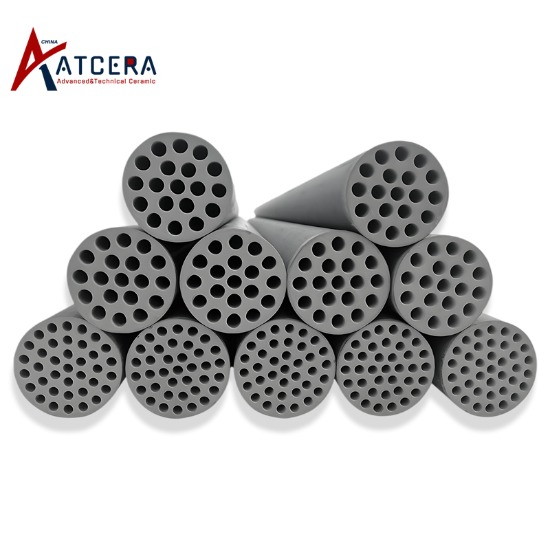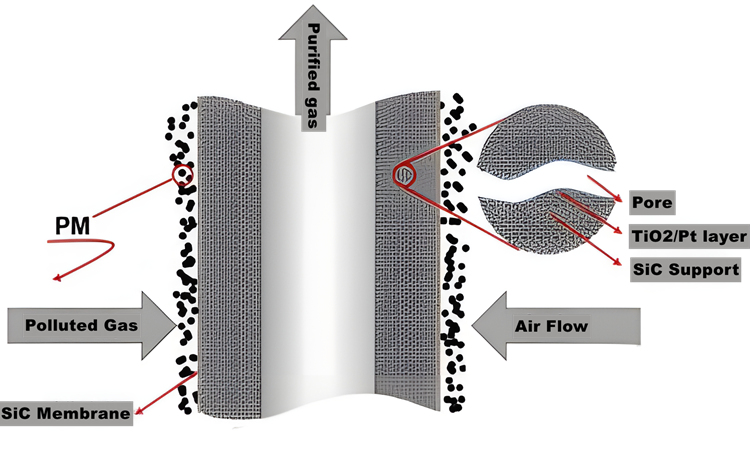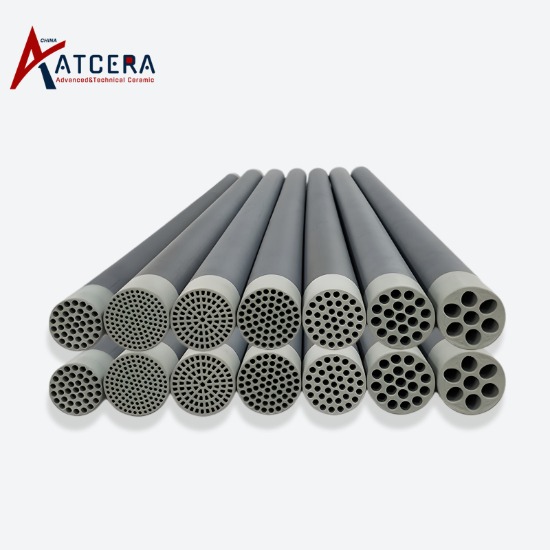With the rapid development of industry, water pollution is becoming more and more serious, and the high-efficiency and energy-saving ceramic membrane technology plays an important role in modern water treatment. Silicon carbide (SiC) ceramic membrane has the advantages of good thermal shock resistance, high temperature and high pressure resistance, can maintain good stability under harsh conditions and long service life, etc. Silicon carbide (SiC) ceramic membrane separation technology is also considered to be one of the most rapidly developed new membrane separation technologies in recent years.

Application in High Temperature Flue Gas Purification
Silicon carbide membrane tube has unique advantages in the field of high temperature flue gas treatment because of its advantages of high temperature resistance, corrosion resistance and thermal shock resistance.
For particulate pollutants such as PM2.5, the dust removal mechanism of SiC membrane tube is sieve, retention, adsorption and so on.
In addition, silicon carbide membrane tube in high temperature dust removal has achieved large-scale applications, such as coal chemical industry, polysilicon and steel and other industries, such as high-performance SiC membrane tube has been industrial application in the coking industry moving bed active coke desulfurization.
Besides, the catalyst can also be loaded on the it to realize the integration of dust removal and catalysis, which has a good application prospect. For example, the specific surface area can be improved by the pore modification strategy to improve the catalyst loading efficiency.

Schematic diagram of SiC TiO2 Pt catalytic membrane
Application in Oil-Water Separation
Compared with other oxide ceramic membrane tubes, silicon carbide membrane tubes have higher hydrophilicity and more advantages in oil-water separation. This is because the hydrophilic silicon carbide membrane has a greater electrostatic repulsive effect on the oil, so it has a higher water flux and better anti-pollution performance.
For example, membrane bioreactor (MBR) is a new water treatment technology which is coupled by membrane separation unit and biological treatment unit. The silicon carbide membrane bioreactor has also shown good effect in the treatment of oily wastewater.
Compared with the polymer flat membrane, the flux of silicon carbide membrane is increased by more than 50%, which can effectively reduce the chemical oxygen demand and turbidity in water. Silicon carbide membrane shows a good application prospect in the treatment of oily wastewater.

Application in Gas Separation
Silicon carbide membrane tube is widely used in gas separation fields such as hydrogen recovery, nitrogen recovery, acid gas treatment, greenhouse gas capture, water gas reaction, etc., without introducing phase change process, it has the advantage of low energy consumption. The separation layer of the asymmetric silicon carbide membrane tube screens the gas under the action of molecular repulsion, compared with small molecular gases, the diffusion of large molecular gases is hindered, so as to achieve selective separation, so it can be used for the separation of He/Ar, H2/N2, H2/CH4, H2/CO2 and other gases.
The silicon carbide membrane tube is more attractive for the separation of hydrogen. Compared with the high-temperature gas purification and oil-water separation, the application of SiC membrane tube in gas separation is less, mainly because the formed silicon carbide membrane has a dense structure and is only suitable for small molecule gas separation and limited.
Combined with cost and other factors, the competitiveness of silicon carbide membrane tube compared with other gas separation membranes needs to be improved.



























